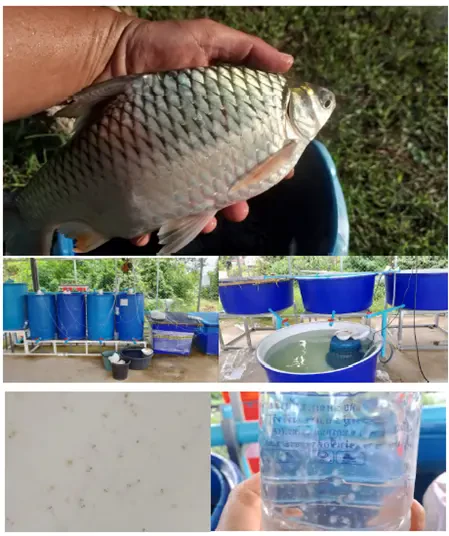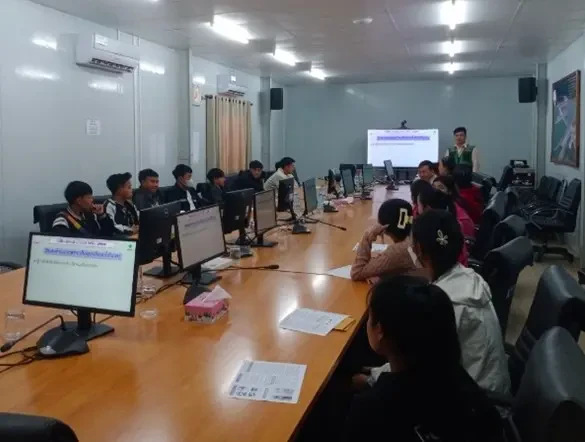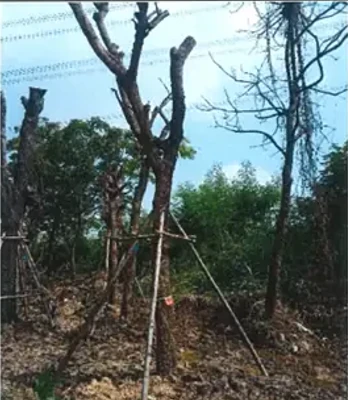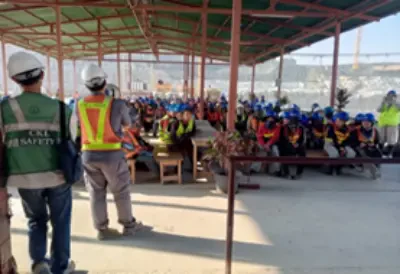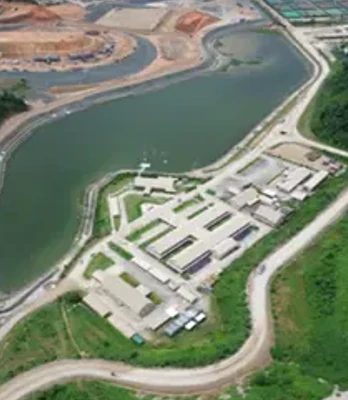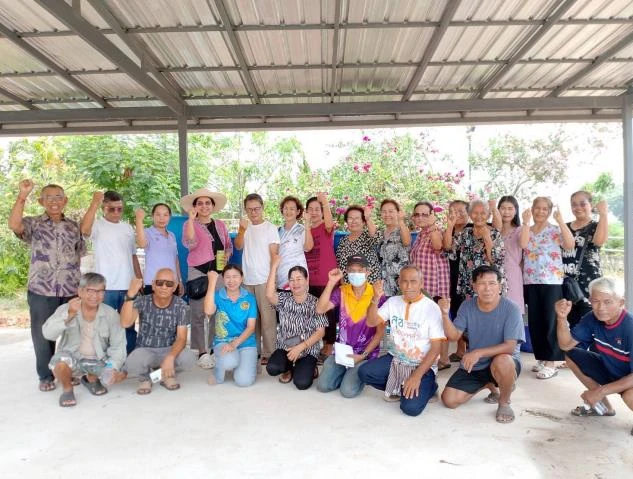

Biodiversity
Commitment, Challenge and Opportunity
CH. Karnchang’s construction and infrastructure development projects may have significant environmental and biodiversity impacts, potentially affecting stakeholders through resource shortages, habitat destruction, and species extinction.
These consequences could disrupt the supply chain, increase operational costs, and damage the company’s reputation. Furthermore, they may lead to public complaints, conflicts with societal expectations, and business disruptions.
To address these challenges, CH. Karnchang is committed to effective biodiversity and ecosystem management, aiming to avoid and minimize biodiversity impacts from its business activities. The company also strives to achieve a Net Positive biodiversity Impact (NPI) on nature while compensating for any negative effects on biodiversity. It ensures strict compliance with all relevant environmental regulations and continuously assesses biodiversity risks associated with its equipment, processes, and operations.
Supporting the SDGs Goals
Goal 15:

Stakeholders Directly Impacted
Goals and Performance Highlights
- The objective is to achieve no net loss of nature. (No Net Loss - NNL)1/
Base Year 2020, according to the target years 2030–2035.
- Achieve a net positive impact on biodiversity (Net Positive Impact - NPI)1/
Base Year 2020, and Achieving a sustainable net positive impact by 2050.
- Ensuring full compliance with the ecological requirements set by the EIA during the construction phase across all sites subject to environmental impact assessment, with appropriate environmental mitigation measures in place.
Target Year 100%

Note : 1/ The targets for No Net Loss (NNL) and Net Positive Impact (NPI) at CH. Karnchang, as a construction contractor operating on client-owned sites (without ownership of the construction areas), are defined within the following scope :
- The assessment of impacts and implementation of measures to achieve No Net Loss (NNL) and Net Positive Impact (NPI) apply only to construction activities directly under the company’s control.
- For construction sites owned by clients, long-term monitoring and implementation of measures will be subject to agreements and collaboration with the property owners.
Management and Operational Approach

As a construction contractor, CH. Karnchang does not have direct control over project site selection or the ability to avoid areas with high biodiversity, ecologically significant habitats, or designated Key Biodiversity Areas (KBA).
This responsibility lies with the project owner. However, the company remains committed to environmental stewardship by implementing measures to avoid and reduce impacts on biodiversity. These efforts include conducting thorough environmental assessments on biodiversity risks, studying local ecosystems, and identifying plant and animal species to ensure that construction activities minimize ecological disruption through existing operational projects and potential new operational projects.
The company adopts a comprehensive biodiversity management plan aligned with environmental management policies, green construction principles, climate considerations, and sustainable biodiversity conservation, all while adhering to international standards. This plan integrates impact prevention and mitigation throughout all project phases—from planning and design to construction and post-construction monitoring.
Strict compliance with environmental regulations is a core principle of CH. Karnchang’s operations. The company conducts Environmental Impact Assessments (EIA), in line with government regulation, to evaluate potential effects on both terrestrial and aquatic ecosystems, assess biodiversity-rich areas, and identify associated risks. Where necessary, mitigation and restoration measures are implemented to minimize environmental damage and loss of biodiversity . Additionally, the company actively promotes a net positive environmental impact through habitat restoration, green space conservation, and long-term biodiversity initiatives. Stakeholder engagement and employee awareness programs are integral to sustaining ecological balance and environmental quality across the company’s supply chain. Biodiversity conservation strategies include defining clear construction boundaries, preventing encroachment into surrounding natural areas, establishing buffer zones, and preparing ecosystem restoration plans for post-construction recovery. When necessary, relocation plans for affected species are also developed. Furthermore, the company integrates environmental conservation principles into all construction activities, including pollution control, waste management, efficient resource utilization, and site rehabilitation to restore ecosystems as close to their original state as possible.
These initiatives underscore CH. Karnchang’s commitment to ecological responsibility. While the company may not determine project locations, it remains deeply engaged in preserving and protecting natural ecosystems through proactive environmental management and sustainable construction practices.
Biodiversity Action Plan: Impact assessment and mitigation measures
| Topic | Environmental Impact | Environmental Impact Prevention and Mitigation Measures |
|---|---|---|
| Surface water quality and aquatic ecosystems |
Storing construction materials and equipment near water sources can result in debris contaminating the water and obstructing its natural flow. If construction occurs upstream, oil and grease residues may enter the water, reducing oxygen levels and negatively impacting aquatic life, including plankton and benthic organisms | Ensure proper material storage, regularly clean drainage pipes, prevent oil contamination, and monitor the aquatic ecosystem every two months throughout the construction period. |
| Terrestrial Ecosystem |
The construction process can have both direct and indirect impacts on wildlife in the area. For instance, land preparation for construction may lead to habitat loss and fragmentation, reducing animal and plant populations and potentially leading to extinction over time. |
We conduct monthly biodiversity and wildlife impact assessments to promote sustainable coexistence between humans and natural ecosystems. Additionally, we implement conservation measures to protect wildlife and native plants, mitigate soil erosion and land degradation, and prevent illegal deforestation. Protection of Wildlife and Native Plants
Soil Erosion Prevention and Forest Encroachment Control
|
Mitigation hierarchy
CH. Karnchang implements the mitigation hierarchy approach across all operations to prevent business activities from causing significant harm to biodiversity and natural resources, ensuring ecological balance is maintained. The mitigation hierarchy follows four key steps: Avoid, Minimize, Restore, and Compensate
Environmental Impact Assessment (EIA) Study
For all project sites, whether new developments or expansions, the company conducts Environmental Impact Assessment (EIA) reports in compliance with the requirements of relevant regulatory authorities. This ensures No Net Loss of biodiversity resulting from the company's operations. Each project's EIA report must include an assessment of ecologically sensitive areas, critical biodiversity areas, environmentally vulnerable zones, or regions home to species classified under the The International Union for Conservation of Nature’s (IUCN) Red List.
Additionally, the company has rigorously and comprehensively implemented measures to prevent and mitigate environmental impacts. It also monitors environmental quality in accordance with environmental impact assessment measures, focusing on key parameters such as surface water quality, noise levels, aquatic ecosystems, and terrestrial ecosystems. Environmental monitoring is conducted at least twice a year, alongside the development of appropriate prevention and mitigation strategies for potential impacts. These efforts ensure compliance with environmental standards and contribute positively to ecosystems in the long term.
Furthermore, the company prioritizes fostering engagement with collaborative networks, including government agencies, private organizations, local institutions, communities, locals, and various stakeholders, to ensure the ongoing evaluation and enhancement of environmental management processes. This approach aims to improve the efficiency of environmental quality control while safeguarding and reducing loss of biodiversity and actively promoting sustainable ecosystem restoration.
| Government Agency | Collaboration |
|---|---|

Environment Department, Bangkok

Mass Rapid Transit Authority of Thailand
|
Assist in the care and rehabilitation of transplanted trees from the construction site by preparing a suitable area for their recovery, ensuring they can thrive. Additionally, conduct regular monitoring and follow-up to support their growth. |

The Fine Arts Department

The Treasury Department
|
Conduct a study on the approach to removing and relocating trees in the construction area by transferring them to a suitable nursery site, especially in sensitive areas of cultural and historical significance, to conserve biodiversity and sustainably preserve the unique identity of the area. |
